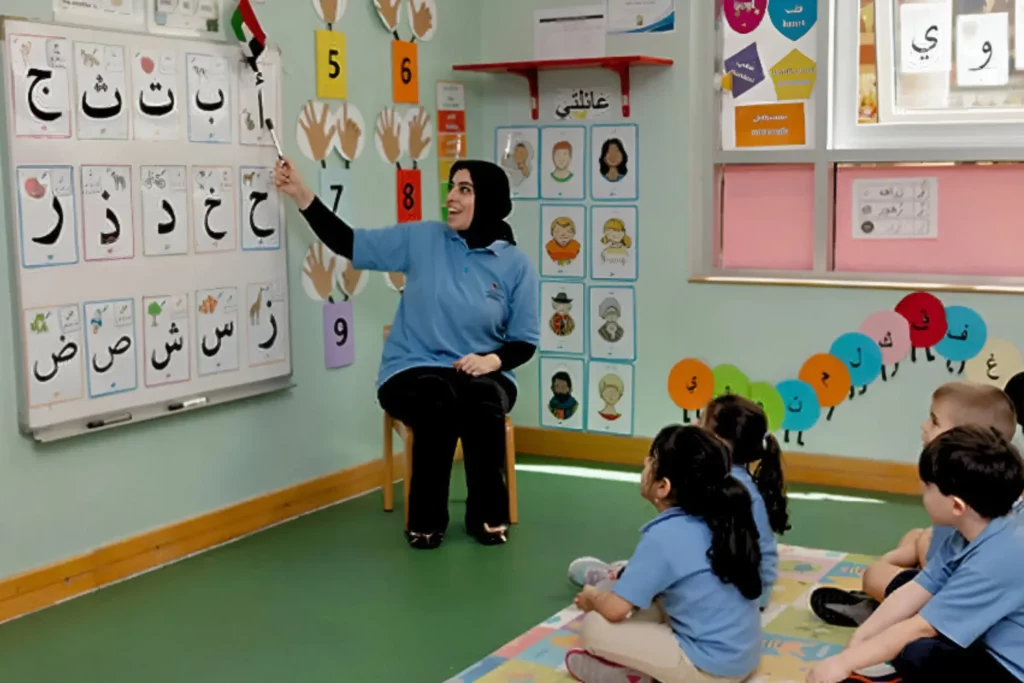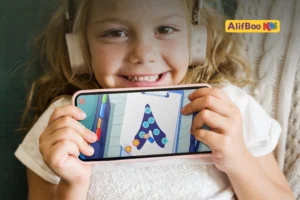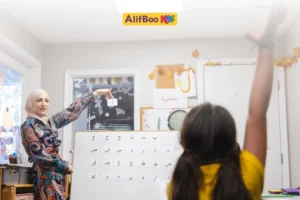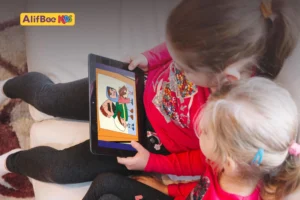How to Make Arabic Learning Fun
Before you start teaching your child Arabic, why not introduce some beautiful facts about the Arabic language to spark their interest and grow their love for learning Arabic?
For example, you can tell your children how many countries speak Arabic and highlight the importance of learning this language to know about Arab countries, communicate with speakers of Arabic, and connect with the rich Arabic culture and heritage.
In this article, we have gathered 10 fun facts about Arabic your kids will love as they start learning Arabic. We also offer mothers and teachers methods to turn these facts into a fun lesson that builds their connection to the language and makes Arabic learning feel as exciting as discovering a hidden treasure
Whether you are a mother teaching children Arabic at home or a school teacher looking for an enjoyable way to introduce the Arabic Language to young learners, the information in this article will give you everything you need to make their learning exciting and memorable.
10 Fun Facts about Arabic Language
1. The Language of the Quran
Learning Arabic for kids is always linked to understanding the Quran, especially for little children, who are usually taught short verses from the Quran before mastering Arabic. So, you could start by highlighting how Arabic is the language of the holy book of Islam and that many people learn Arabic to read and understand the Quran in its original language.
You can tell young kids that learning Arabic allows them to understand Allah’s message in the Holy Quran to humankind. Also, mastering Arabic for kids helps in knowing Allah’s commands and obeying them faithfully.
2. Language Used in Prayer
Another fun fact about Arabic for kids is that it is the only language used during prayer in Islam. That’s why millions of non-Arabs joining Islam learn it to connect with Allah in the five daily prayers and perform one of the five pillars of Islam.
When praying, we have to read verses from the Quran and recite other sentences and supplications, all in Arabic. Reciting the Quran has to be clear and accurate, especially following Tajweed rules for Quranic verses. This makes learning Arabic essential for kids as it helps them perform one of the most important rituals in Islam, one they are expected to learn at a young age.
3. Written Right to Left
After introducing the link between the Arabic language and Islam, through the Quran and Prayer, you can share some interesting facts with young learners that distinguish Arabic from other languages in writing, making it fun to learn and understand.
Unlike English and many other Roman languages that are written from left to right, Arabic is written from right to left. This can feel unusual and challenging for kids at first, but with practice, it becomes easier.
You can help them learn this basic skill of Arabic writing by drawing an arrow from right to left at the top of the page to give them a visual cue to help them when they practice.
4. Words Built from Roots
Next, you can explain to your kids how many Arabic words are formed. Arabic words often come from a set of three letters called a “root.” For example, the root “ك-ت-ب” (k-t-b) relates to writing:
ك - ت - ب
Book
kitaab
كتاب
Writer
kaatib
كاتب
Library
maktaba
مكتبة
This system makes it easier to learn and understand new words. Teach this fact about Arabic grammar by drawing a tree together, where they can write the word root in the root area in the tree and words formed from it in tree branches or leaves.
5. Words are Masculine or Feminine
Another fun fact about Arabic that can be very helpful for kids to learn early is that Arabic words can be masculine or feminine. This helps make the language more descriptive.
Children starting to learn Arabic can learn how certain Arabic nouns are masculine and others are feminine. You can also teach the young learners how the letter ة is usually added to some words (mostly professions) to make them feminine.
Here are some examples you can use:
Masculine and Feminine Nouns in Arabic
English Noun
Word Gender
Arabic Noun
An apple
Feminine
تفاحة
A pen
Masculine
قلم
A book
Masculine
كتاب
A tree
Feminine
شجرة
A house
Masculine
منزل
A toy
Feminine
لعبة
Arabic Words with both Masculine and Feminine Forms
Profession
Feminine
Masculine
Student
طالبة
طالب
Doctor
طبيبة
طبيب
Engineer
مهندسة
مهندس
Teacher
أستاذة
أستاذ
6. A Special Form for Two
Another basic fact about Arabic language and grammar is that it has a special way to talk about two things, called the “dual form.” This can be an enjoyable part of the language to teach to kids.
You could use two objects and drill the dual form in writing and speaking. The dual form can also be made fun with drawing. Draw an object once then twice and ask your child to write the singular and the dual forms.
Here are some easy examples you can use:
English
Dual Form
Arabic Word
A book - two books
كتابان
كتاب
A pen - two pens
قلمان
قلم
A boy - two boys
طفلان
طفل
An apple - two apples
تفاحتان
تفاحة
A tree - two trees
شجرتان
شجرة
7. Letters Change Form
This fun fact can help kids learn how to write letters in the Arabic Alphabet. It is about the different forms the Arabic letters have and how they are written slightly differently depending on their position in a word. Letters that come at the beginning of a word, for example, connect to the following letter with a tiny arm.
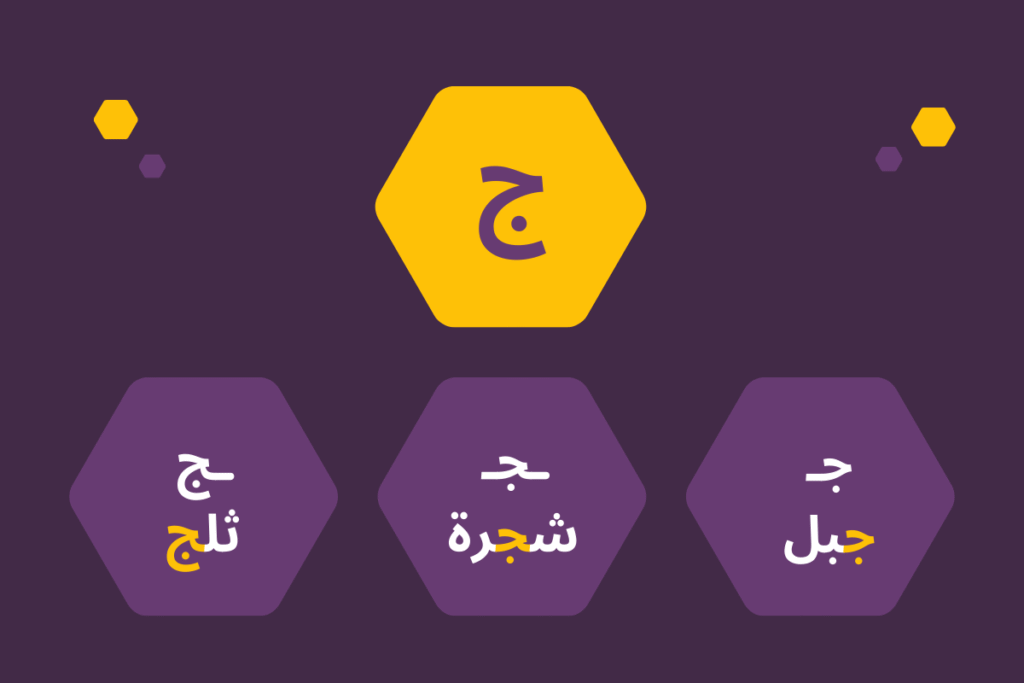
With every new letter you teach your kids, also teach its form in all positions in a word to show that it’s still the same letter.
A fun way to teach the different forms of a letter is to simply write the letter in all its positions and draw a tiny hand in the place where it has to connect to another letter.
8. Similar-Looking Letters
Another fact about Arabic letters that can be fun to teach little children is how some letters look similar. Teaching young learners letters in this way can make learning the Arabic Alphabet easier. Simply, teach letters in groups with similar-looking letters.
Some Arabic letters share the same basic shape but are distinguished by the number or placement of dots. Look at these examples:
- ب (bā’), ت (tā’), ث (thā’) → One, two, or three dots on the same shape.
- ج (jīm), ح (ḥā’), خ (khā’) → All have the same basic shape but differ by dots and sounds.
You can create activities where spotting the differences between letters earns them points toward a prize, making the learning process more rewarding.
Another great idea that all kids and parent love is listening to songs that teach the Arabic letters in a catchy and memorable way. This will help kids notice the difference between similar-looking letters. Check AlifBee Kid’s beautiful song that you can start using with your kids today.
9. Unique Sounds in Arabic
Arabic has special sounds that you won’t hear in most other languages, and teaching these letters to kids will help them with using many everyday words in Arabic. Try teaching these special letters to kids one at a time, focusing on correct pronunciation and simple examples.
Here are four special letters with examples to practice:
Arabic Letter
Sound
How to Pronounce it
Example Words
ح
ḥā’
Breathe out strongly from deep in the throat without using your voice
حليب - حوت
ص
ṣād
Say "s" while making your mouth tighter and raising the back of your tongue.
صورة - صوص
ق
qāf
Pop a "k" sound from deep in your throat, farther back than regular "k."
قلم - قرد
ض
ḍād
Say "d" with a heavy, full-mouth sound, pressing your tongue to the sides of your teeth.
ضفدع - ضرس
10. Arabic Words From English
Arabic has special sounds that you won’t hear in most other languages, and teaching these letters to kids will help them with using many everyday words in Arabic. Try teaching these special letters to kids one at a time, focusing on correct pronunciation and simple examples.
Here are four special letters with examples to practice:
English Word
Pronunciation
Arabic Origin
Algebra
al-jabr
الجبر
Coffee
qahwa
قهوة
Sugar
sukkar
سكر
Cotton
quṭn
قطن
Giraffe
zarāfa
زرافة
You can rehearse the pronunciation of the Arabic words and point to the similarity with the English words.
Another great idea is to share a story of how these words travelled the world and made their journey to the English language to make children curious and proud of these words.
Final word: Teach Your Kids Arabic with AlifBee Kids
Starting with fun facts about Arabic builds a happy and playful connection with the language and makes kids more excited to listen, speak, and explore Arabic naturally.
If you want more fun ideas to help kids learn Arabic, download AlifBee Kids to give your kids access to countless interactive games, stories, and letter practice they will love and enjoy!
For parents who are also starting to learn Arabic as they are teaching their kids, you will find the AlifBee Arabic Alphabet Blog Series very useful. It has a detailed description of each letter, its correct pronunciation and examples in both Arabic and English.
Frequently Asked Questions (FAQ)
Arabic is one of the oldest languages still spoken today! Kids will be amazed to learn that Arabic is written from right to left and that it has no capital letters. Another fun fact about Arabic is that there are over 12 million words in the language — making it a treasure chest of discovery for young learners.
Interactive learning tools like the AlifBee Kids Arabic app make learning Arabic for children exciting and simple. Fun games, colorful visuals, and storytelling help children retain vocabulary and practice pronunciation effortlessly.
The AlifBee Kids Arabic app is a specially designed learning platform that makes Arabic accessible and entertaining for children. It uses animated lessons, games, and challenges to make sure kids stay motivated while mastering the basics of Arabic.
Yes, there is! Learning Arabic focuses on everyday language skills like speaking, reading, and writing, while Quran learning for kids emphasizes classical Arabic used in the Quran. Both paths are valuable, and many families choose to combine them for a well-rounded education.
Absolutely! Besides the AlifBee Kids Arabic app, many websites, YouTube channels, and interactive e-books are available to help children engage with Arabic learning. Choosing playful and age-appropriate content ensures kids stay interested.
Starting young helps children absorb the unique sounds and structures of Arabic more naturally. Early learners often develop stronger pronunciation skills, a deeper cultural appreciation, and greater confidence when speaking — making Arabic a lifelong asset.

